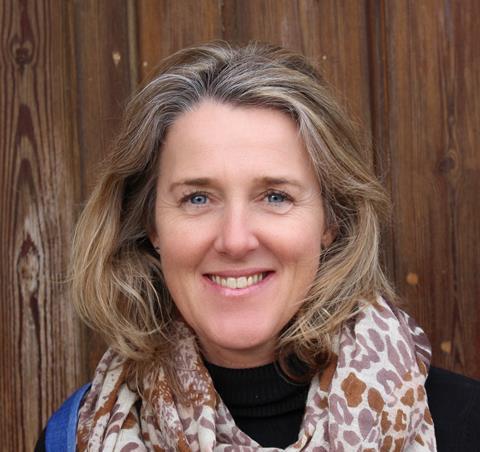A complicated project brings minimal joy – unless you’re a fan of bollards, writes Sophie Thompson

The completion of the new roundabout and station at Old Street in east London has caused quite a stir. In a TikTok post, an underwhelmed Moses Combe asks, “This is it? After how many years of this thing being in construction?” A Guardian reader called the before “a soulless hellhole,” and the after too. Ouch.
There’s no doubt this was a highly complex scheme, which needed to address serious safety concerns, and that the project was hit by a series of unfortunate delays and challenges, including Covid and soaring inflation. There are improvements in the new configuration, with new surface-level crossings and traffic lights for cyclists, although cyclists say it still feels confusing.
But then there’s the space itself. When an international design competition was launched to reimagine this prominent location in Europe’s answer to Silicon Valley, designers let their imaginations rip with otherworldly, futuristic visions of an exciting civic space.
The reality is steely, angular and hard – not a place where anyone would want to linger. It is ringed by 120 bollards, but not designed in the round. So, while it connects some important and distinctive streets, wayfinding is a struggle. And then there’s that green sloping roof of the Old Street Station entrance – a cabbage patch of green in a grey sea. There are some seats and a narrow strip or two of planting.
Movement and public realm projects on this scale are never simple. City space is always heavily contested, and there are multiple stakeholders with firm views. Factor in site constraints – including building on top of an Underground station, safety and security, pedestrian flow, and the demands of a busy space – and even with the best will in the world, good intentions can sometimes be laid waste, vision statements like headstones in a graveyard.
This isn’t meant to be a post-mortem of Old Street, though, but rather a call to action for doing things differently. Imagine, for example, if the starting point for the roundabout had been an entirely green space, and all its functioning elements had to be designed into the space in a way that co-existed with nature. The end result would have felt very different.
Change is possible. Any place can function as it needs to and make us feel good at the same time
People have argued, “but, ringed by highways, who would want to sit here anyway?” Actually, people might, with trees mitigating pollution and baffling noise, grasses softening edges, and year-round colour and interest. Bees landing on swaying verbena, birds swooping into a welcoming environment.
It’s high time we adopted a bolder response to public spaces. Not just token trees or tufts of building greenery, often sentenced to short and pretty grim lives, but a proper wilding of the city where we seize every opportunity to make public spaces work hard for people and the planet, reversing the habitat and species loss that society appears to have become resigned to, and where hard and pristine is replaced by soft and shaggy.
These still need to be managed spaces, cared for and loved. No one wants overgrown shrubs and bushes creating dark corners. But more broadly, this is about cities relaxing, feeling more confident and guerrilla, breathing out and coming to the realisation that we need a new aesthetic for these times – one that illuminates the pleasure of allowing nature to colonise.
If you’re in London, head to Princes Circus at the top of Shaftesbury Avenue for a glimpse of what’s possible. This used to be an austere, grey slice of the city, criss-crossed by busy roads and dominated by an electricity substation. Audiences from the Shaftesbury Theatre had to exit onto narrow pavements.
Part of Camden Council’s West End Project, the area has been made to feel very different. Road space has been reclaimed for pedestrians and cyclists, and coffee shops spill out and thrive under a lush canopy. It is comfortable, open, and inviting, now with generous, long seating for those theatre audiences. At night, dappled woodland-effect lighting makes it not just safe, but special. It feels alive and like it finally makes sense.
Change is possible. Any place can function as it needs to and make us feel good at the same time. We can heal the severance between people and nature, but only if we see nature and landscape as the yeast to the best loaf ever – the active ingredient, and where to start.
>> Also read: Borough set to object to Old Street Roundabout plans
Postscript
Sophie Thompson is Head of Public Realm and a board member at LDA Design
















1 Readers' comment